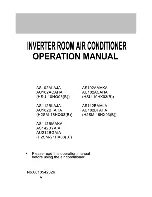Reviews:
No comments
Related manuals for HOME LOOM with Compu-Dobby III

KAL-OL-MB180
Brand: Kalamazoo Pages: 4

XDUR-840
Brand: Xiamen Xindeco Pages: 8

HEN70ETFP
Brand: Haier Pages: 36

CXW-219-D69
Brand: Haier Pages: 13

H2SM-21HX03
Brand: Haier Pages: 27

HRFZ-250D AA
Brand: Haier Pages: 104

OM-CP-IFC200
Brand: Omega Pages: 2

150-70
Brand: Waterous Pages: 38

AHB-11S Gus G. FIRE
Brand: Duncan Pages: 2

NL-RF1000
Brand: Nesslab Pages: 11

uDL2
Brand: Cortalk Pages: 28

OBDLink SX
Brand: Scantool Pages: 2

Digitrip 510 basic
Brand: Eaton Pages: 44

BA131
Brand: Barco Pages: 5

BXM32
Brand: Wallenstein Pages: 48

DZ 43300
Brand: Dee Zee Pages: 2

TRUSSING -
Brand: PROEL Pages: 76

MD6TU
Brand: Broan Pages: 24

















